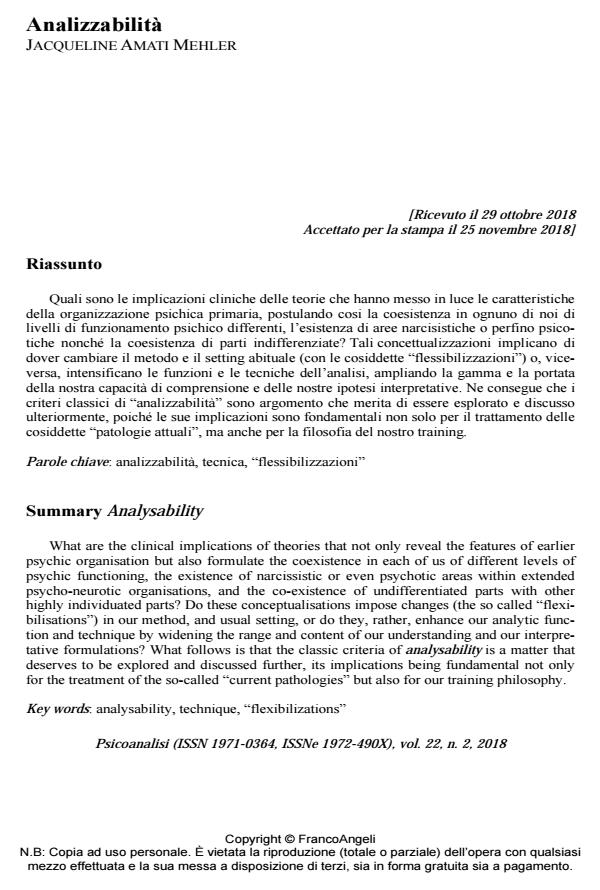Analysability
Journal title PSICOANALISI
Author/s Jacqueline Amati Mehler
Publishing Year 2019 Issue 2018/2
Language Italian Pages 8 P. 65-72 File size 130 KB
DOI 10.3280/PSI2018-002005
DOI is like a bar code for intellectual property: to have more infomation
click here
Below, you can see the article first page
If you want to buy this article in PDF format, you can do it, following the instructions to buy download credits

FrancoAngeli is member of Publishers International Linking Association, Inc (PILA), a not-for-profit association which run the CrossRef service enabling links to and from online scholarly content.
What are the clinical implications of theories that not only reveal the features of earlier psychic organisation but also formulate the coexistence in each of us of different levels of psychic functioning, the existence of narcissistic or even psychotic areas within extended psycho-neurotic organisations, and the co-existence of undifferentiated parts with other highly individuated parts? Do these conceptualisations impose changes (the so called "flexi-bilisations") in our method, and usual setting, or do they, rather, enhance our analytic function and technique by widening the range and content of our understanding and our interpretative formulations? What follows is that the classic criteria of analysability is a matter that deserves to be explored and discussed further, its implications being fundamental not only for the treatment of the so-called "current pathologies" but also for our training philosophy.
Keywords: Analysability, technique, "flexibilizations"
Jacqueline Amati Mehler, Analizzabilità in "PSICOANALISI" 2/2018, pp 65-72, DOI: 10.3280/PSI2018-002005